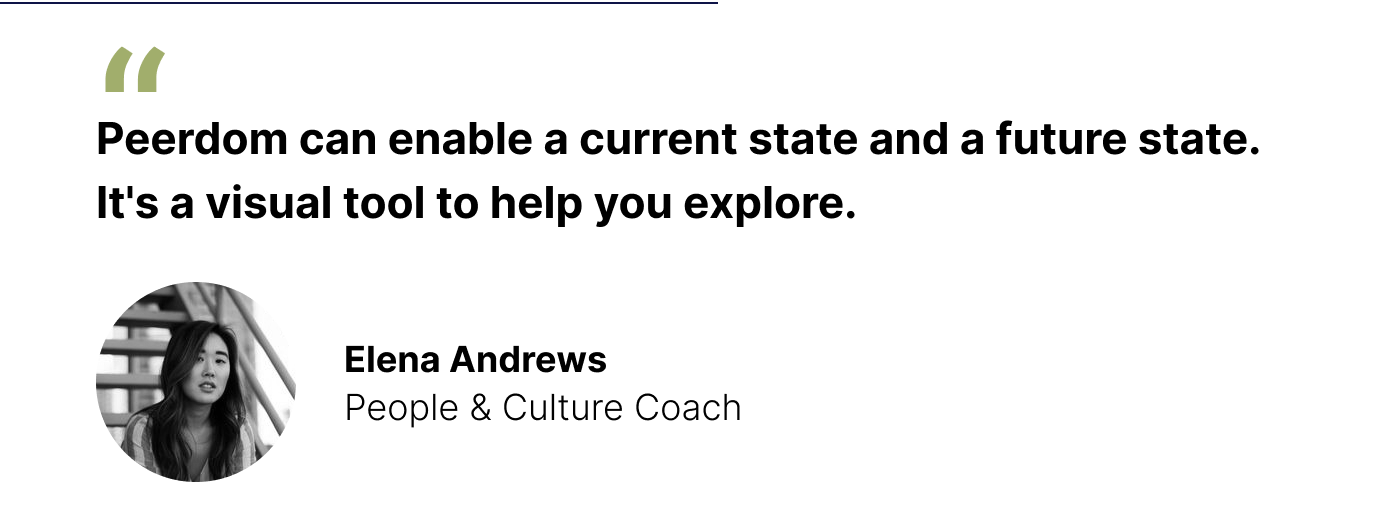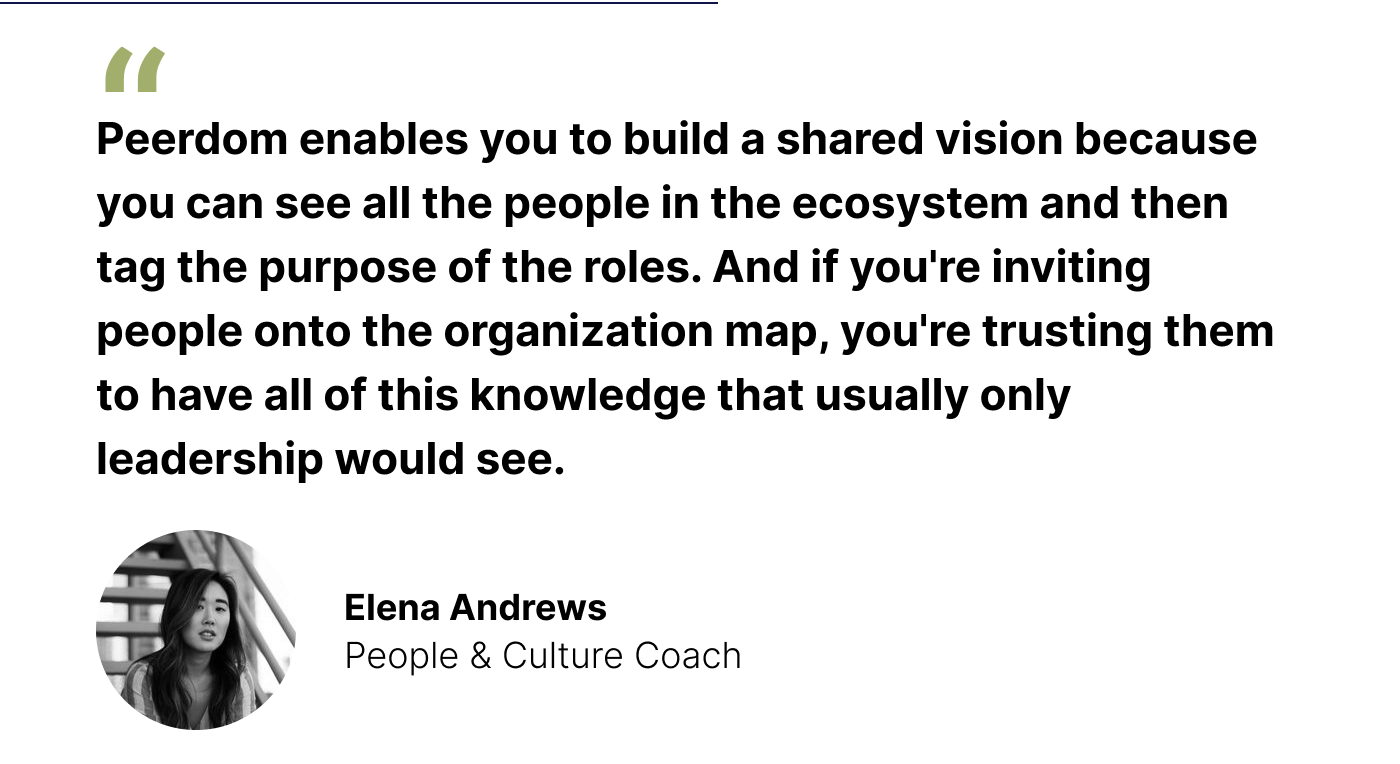Empowering volunteers and boosting a cause-driven mission
Discover how a Canadian church developed an organization map of its 75+ volunteers and staff to revitalize itself during the pandemic.

During the global pandemic of 2020, a Canadian church experienced challenges extending beyond the virus.
Hamilton Church (not its real name*) was defined by a culture of siloed operations, conflict avoidance, and organizational confusion.
Five of seven full-time pastors resigned. Volunteer leaders of the church were aging, while attendance and donations decreased. No one had a clear picture of the various elements of the church ecosystem of leaders, staff, and volunteers–let alone how they worked together.
The church was suffering from leadership chaos and organizational disarray.
These problems weren’t—and aren’t—unique to Hamilton. Many religious, charitable, and mission-driven non-governmental organizations (NGOs) face challenges related to governance, operational complexity, and bureaucratic inefficiency.
Thankfully, there are resources for purpose-driven organizations to develop healthy cultures and improve their impact on the world. For example, organization mapping tools improve visibility across operations and help leaders navigate challenges specific to purpose-driven or volunteer-led organizations.
Hamilton, for instance, found Peerdom’s work map to be just the right tool to help it chart a way forward during difficult times.
In particular, the map equipped Hamilton leaders to imagine a more effective, more efficient organizational structure, according to a workplace culture consultant who supported Hamilton in its evolution.
Elena Andrews (not her real name*) says Peerdom’s map “allows you to view the organization through a new lens.” In turn, she says, “That allows you to see the potential in the possibilities and the barriers and the blocks.”

Illuminating an opaque organization
Hamilton Church is a 200-year-old church with a noteworthy history. But by 2020, the church was under strain—and not just from the pandemic that shut down religious services throughout the world. The Hamilton congregation had been shrinking, to about 250 members. A further blow to the organization was the departure of the five pastors.
The leadership crisis was magnified by the fact that Hamilton was—and is—a complex organization. With a paid staff of 25 employees, it features a variety of “ministries,” such as children’s education, refugee support and international missionary activities. Thanks to an unusually large endowment, it has an annual operating budget of about $3.5 million. Several dozen volunteers work in different ministries and on other initiatives of the Church.
Exactly what everyone was doing, though, and how their efforts interconnected was a mystery in 2020. This is a common problem in purpose-driven organizations with many volunteers: unless everyone is provided access to shared information about the operational structure, it can remain complicated and confusing.
“Nobody had successfully mapped the ecosystem,” recalls Elena. “The number of committees and active ministries we had varied, depending on who you asked. There were various answers. It was confusing.”
Elena began working with Hamilton in 2020 and led a strategic initiative to review church operations the following year.
She learned about Peerdom’s mapping software at a conference in 2020. “As soon as I saw it, I was like, ‘Yes! This is what I need!’”
Elena and Hamilton used Peerdom to document the church’s governance structure, ministries and committees, including the roles of each volunteer and staff member. The resulting organization map revealed all the elements of the church, how they fit together, and the roles held by its members.
Peerdom’s use of nested circles to represent teams, and its option to see those teams in an “expanded view” where each team stands on its own apart from all others, enabled creative planning, Elena says. In contrast to traditional organizational charting tools that reflect top-down hierarchies, the map allowed Hamilton leaders to envision alternative governance structures, such as Sociocracy.

Tracking term limits and tenure
Besides providing much-needed visibility into the operations of Hamilton, the organization map also helped the church solve a problem typical at volunteer-based organizations governed in democratic ways.
Hamilton has many roles where members of a ministry or committee are elected. They then hold office for various term lengths, based on the committee bylaws. Given more than a dozen ministries–with many volunteers and congregation members active on more than one–tracking individuals’ tenure and who’s involved where is complicated.
With Peerdom’s Election app they found an easy way to stay on top of term limits and tenures. And they knew who would soon be free to volunteer elsewhere.
The Elections app distinguishes elected roles with a small arrow, setting such roles apart visually. It also provides a timeline view that summarizes all elected roles and highlights upcoming or overdue role elections. The app helps with ministry planning, Elena says. It makes clear that seeking a volunteer leadership spot doesn’t mean having to serve in it for life. And Hamilton officials are reminded that various committees will need to elect new leaders each year.
“It provides a one-glance view,” Elena says. “You can notice that ‘Oh, the clerk role is coming up for re-election’ or, ‘Wow, all of our elders have terms that are expiring. We better start the elder nomination process.’”

Seeking More Efficient Use of Resources
Peerdom helped Hamilton with another challenge common to non-profit organizations: detecting and eliminating bureaucratic waste. It can be easy for NGOs to add more employees than necessary during periods of flush financing. Preventing redundancies and bloated operations becomes more difficult as charitable and purpose-driven organizations grow.
Hamilton was an extreme example. In a typical church of 250 congregants, only three or four full-time employees are required. Hamilton had 25 paid staff in 2020. That number reflected the resources at its disposal, including a large trust fund.
Still, it was hard to know if Hamilton could be run more efficiently, Elena recalls.
“There was conversation around whether we were overstaffed for a congregation of this size,’” Elena says.
Ultimately, the church streamlined its operations. Using the Peerdom map to experiment with different scenarios and different allocations of roles, Elena and Hamilton were able to reduce the number of pastor positions from seven and a half (there had been a part-time pastor) to five and a half. That represents a 27 percent reduction.
Living the values
Peerdom was part of a wider initiative to resurrect the vitality of Hamilton Church. The organization also surveyed various stakeholders about the deeper values that drew them to Hamilton, and what was missing from the church.
One of the findings of the survey was a desire for a shared vision. Respondents also wanted more trust, honesty, and open communication. These values—typical of many purpose-driven, nonprofit organizations—had not been fully expressed at Hamilton in part because the church did not have effective tools for transparency.
“Peerdom helped Hamilton staff and the volunteer leadership to build mutual understanding, trust and openness," Elena says.

Elena says Peerdom and the wider cultural transformation work have made a positive impact at Hamilton.
She recalls a conversation in late 2022 with one of the church “elders”—a lay person with leadership responsibility:
“He came up to me around Christmas and said, ‘Hamilton isn't the same place that it used to be.’ I said, ‘What do you mean?’ And he said, ‘It’s not one thing. It just feels better around here.’”
*We’ve changed the name of the church and the consultant who worked with it given sensitive internal matters discussed in the article.